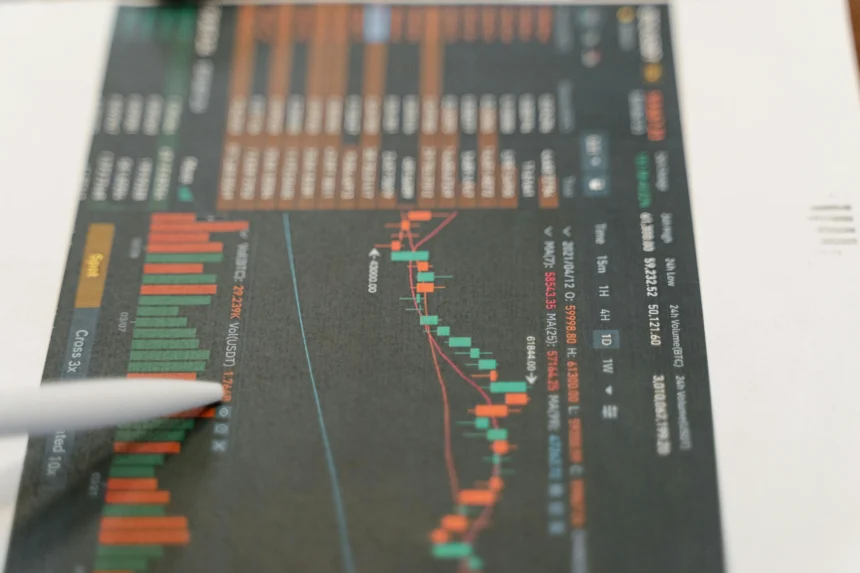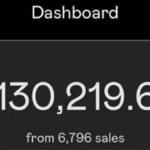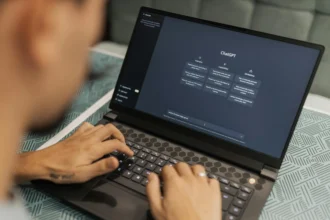Have you ever wondered how digital transactions can be secure without a central authority like a bank? The answer lies in understanding how blockchain work a revolutionary technology that’s reshaping everything from finance to supply chain management. At its core, blockchain is a distributed ledger system that maintains a continuously growing list of records, called blocks, which are linked and secured using cryptography.
Think of blockchain as a digital notebook that’s shared among thousands of people worldwide. Every time someone makes a transaction, it gets written in this notebook, and everyone can see it. But here’s the fascinating part: once something is written, it can’t be erased or changed without everyone else knowing about it.
This comprehensive guide will demystify blockchain technology, explaining its fundamental principles, components, and real-world applications in terms anyone can understand. Whether you’re a complete beginner or looking to deepen your knowledge, you’ll discover exactly how this groundbreaking technology operates and why it’s considered one of the most significant innovations of our time.
What is Blockchain Technology?
Before diving into how blockchain work, it’s essential to understand what it actually is. Blockchain is a decentralized, distributed digital ledger that records transactions across multiple computers in such a way that the registered transactions cannot be altered retroactively.
The Basic Structure
Imagine a chain made of digital blocks, where each block contains:
- Transaction data: Information about transfers, contracts, or other digital activities
- Timestamp: When the transactions occurred
- Hash: A unique digital fingerprint for that specific block
- Previous hash: The digital fingerprint of the previous block in the chain
This interconnected structure creates an unbreakable chain of information that forms the backbone of blockchain technology.
Key Characteristics
Blockchain technology is defined by several fundamental characteristics:
Decentralization: No single point of control or failure Transparency: All transactions are visible to network participants Immutability: Once recorded, data cannot be easily changed Security: Cryptographic protection and consensus mechanisms Trust: Eliminates the need for intermediaries
How Does Blockchain Work: The Step-by-Step Process
Understanding how blockchain work requires breaking down the process into digestible steps. Let’s walk through exactly what happens when a transaction occurs on a blockchain network.
Step 1: Transaction Initiation
When someone wants to send digital currency or data to another person, they initiate a transaction. This transaction includes:
- Sender’s digital wallet address
- Recipient’s digital wallet address
- Amount or data being transferred
- Digital signature proving ownership
The transaction is then broadcast to the blockchain network, where thousands of computers (called nodes) receive the transaction request.
Step 2: Transaction Verification
Once the transaction is broadcast, network participants called validators or miners begin the verification process. They check:
- Does the sender have sufficient funds or authority?
- Is the digital signature authentic?
- Are all transaction details properly formatted?
- Has this transaction been attempted before (preventing double-spending)?
This verification process typically takes anywhere from seconds to minutes, depending on the blockchain network.
Step 3: Block Creation and Mining
After verification, valid transactions are bundled together into a new block. This is where the mining process begins—one of the most crucial aspects of how blockchain work.
Mining Process:
- Miners compete to solve a complex mathematical puzzle
- The first miner to solve it gets to add the new block to the chain
- Other miners verify the solution
- Once verified, the block is permanently added to the blockchain
Step 4: Network Consensus
For the new block to be accepted, the majority of the network must agree it’s valid. This consensus mechanism ensures that no single entity can manipulate the blockchain. Common consensus mechanisms include:
- Proof of Work (PoW): Miners compete to solve mathematical puzzles
- Proof of Stake (PoS): Validators are chosen based on their stake in the network
- Delegated Proof of Stake (DPoS): Token holders vote for delegates who validate transactions
Step 5: Block Addition and Distribution
Once consensus is reached, the new block is:
- Added to the blockchain permanently
- Distributed across all network nodes
- Synchronized with every copy of the ledger worldwide
This process ensures that every participant has an identical, up-to-date version of the blockchain.
Core Components of Blockchain Technology
To fully grasp how blockchain work, you need to understand its essential components. Each element plays a critical role in maintaining the system’s integrity and functionality.
Blocks: The Building Blocks
Each block in a blockchain contains several key elements:
Block Header: Contains metadata about the block Merkle Root: A hash representing all transactions in the block
Nonce: A random number used in the mining process Transaction Data: The actual information being recorded
Cryptographic Hashing
Hashing is fundamental to how blockchain work. A hash function takes input data of any size and produces a fixed-size string of characters. Key properties include:
- Deterministic: Same input always produces same output
- Fast computation: Quick to calculate
- Avalanche effect: Small input change drastically changes output
- Irreversible: Cannot determine input from output
The most commonly used hash function in blockchain is SHA-256, which produces a 256-bit hash regardless of input size.
Digital Signatures
Digital signatures ensure that transactions are authentic and haven’t been tampered with. They work using public-key cryptography:
- Each user has a pair of keys: public and private
- Private key signs transactions
- Public key verifies signatures
- Only the private key holder can create valid signatures
Peer-to-Peer Network
The blockchain operates on a peer-to-peer (P2P) network where:
- No central server controls the network
- Each node maintains a complete copy of the blockchain
- Nodes communicate directly with each other
- Network remains operational even if some nodes fail
Types of Blockchain Networks
Understanding how blockchain work also involves recognizing that not all blockchains operate the same way. There are several types, each with unique characteristics:
Public Blockchains
Characteristics:
- Open to everyone
- Fully decentralized
- Transparent and immutable
- Examples: Bitcoin, Ethereum
Advantages:
- Maximum security through decentralization
- Complete transparency
- No single point of failure
Disadvantages:
- Slower transaction speeds
- Higher energy consumption
- Limited scalability
Private Blockchains
Characteristics:
- Restricted access
- Controlled by single organization
- Faster transactions
- Examples: Hyperledger Fabric, R3 Corda
Advantages:
- Higher privacy and control
- Faster processing speeds
- Lower costs
Disadvantages:
- Less decentralized
- Reduced transparency
- Single point of failure risk
Consortium Blockchains
Characteristics:
- Semi-decentralized
- Controlled by group of organizations
- Restricted participation
- Balanced approach
Advantages:
- Shared control among trusted parties
- Better scalability than public chains
- Maintained decentralization benefits
Disadvantages:
- Still some centralization risks
- Coordination challenges
- Limited openness
Hybrid Blockchains
Characteristics:
- Combination of public and private elements
- Selective transparency
- Customizable access controls
- Flexible architecture
Real-World Applications and Use Cases
Learning how blockchain work becomes more meaningful when you see its practical applications across various industries:
Financial Services
Cryptocurrency: Digital currencies like Bitcoin and Ethereum Cross-border payments: Faster, cheaper international transfers Trade finance: Streamlined letter of credit processes Insurance: Automated claim processing through smart contracts
[Link to cryptocurrency basics guide]
Supply Chain Management
Product traceability: Track items from origin to consumer Authenticity verification: Combat counterfeit goods Quality control: Monitor conditions during transportation Compliance: Ensure regulatory requirements are met
Healthcare
Medical records: Secure, interoperable patient data Drug traceability: Prevent counterfeit medications Clinical trials: Transparent, tamper-proof research data Insurance claims: Automated processing and verification
Real Estate
Property records: Immutable ownership documentation Smart contracts: Automated property transfers Fractional ownership: Tokenization of real estate assets Title insurance: Reduced fraud and errors
Voting Systems
Election integrity: Transparent, verifiable voting Voter privacy: Secure anonymous voting Result verification: Public audit trails Accessibility: Remote voting capabilities
[Link to blockchain applications in government]
Advantages of Blockchain Technology
Understanding the benefits helps clarify why blockchain work has gained such widespread attention:
Enhanced Security
- Cryptographic protection
- Distributed architecture prevents single points of failure
- Immutable transaction records
- Consensus-based validation
Increased Transparency
- All transactions visible to network participants
- Public audit trails
- Real-time monitoring capabilities
- Reduced information asymmetry
Reduced Costs
- Elimination of intermediaries
- Lower transaction fees
- Automated processes through smart contracts
- Reduced administrative overhead
Improved Efficiency
- 24/7 operation without downtime
- Faster settlement times
- Automated verification processes
- Streamlined workflows
Global Accessibility
- No geographical restrictions
- Permissionless participation (public blockchains)
- Financial inclusion for unbanked populations
- Reduced barriers to entry
Challenges and Limitations
Despite its revolutionary potential, understanding how blockchain work also means acknowledging its current limitations:
Scalability Issues
Transaction throughput: Most blockchains process fewer transactions per second than traditional systems Storage requirements: Blockchain size grows continuously Network congestion: High demand can slow processing times Energy consumption: Proof-of-work consensus requires significant computational power
Regulatory Uncertainty
Legal framework: Evolving regulations across jurisdictions Compliance requirements: Varying standards for different industries Government stance: Changing attitudes toward blockchain adoption International coordination: Need for global regulatory harmonization
Technical Challenges
User experience: Complex interfaces and technical requirements Integration: Difficulty connecting with existing systems Key management: Risk of losing access to digital wallets Software bugs: Smart contract vulnerabilities and exploits
Environmental Concerns
Energy usage: Proof-of-work mining consumes substantial electricity Carbon footprint: Environmental impact of mining operations Sustainability: Long-term viability concerns Alternative solutions: Development of more energy-efficient consensus mechanisms
The Future of Blockchain Technology
As we continue to understand how blockchain work and evolve, several trends are shaping its future:
Technological Improvements
Layer 2 solutions: Off-chain scaling solutions like Lightning Network Sharding: Dividing blockchain into smaller, parallel chains Interoperability: Connecting different blockchain networks Quantum resistance: Preparing for quantum computing threats
Industry Adoption
Enterprise integration: More businesses implementing blockchain solutions Government initiatives: Public sector blockchain projects Central bank digital currencies (CBDCs): Government-issued digital currencies Web3 development: Decentralized internet infrastructure
Sustainability Focus
Proof-of-stake adoption: More energy-efficient consensus mechanisms Carbon-neutral mining: Renewable energy-powered operations Green blockchain initiatives: Environmentally conscious development Efficiency improvements: Optimized protocols and algorithms
[Link to future blockchain trends article]
Getting Started with Blockchain
If you’re interested in learning more about how blockchain work practically, here are some steps to begin:
Educational Resources
Online courses: Blockchain fundamentals and advanced topics Documentation: Technical specifications and whitepapers Community forums: Discussion groups and Q&A platforms Books and articles: In-depth analysis and case studies
Hands-on Experience
Cryptocurrency wallets: Practice with small amounts Test networks: Experiment without real money Development tools: Learn blockchain programming Demo applications: Explore existing blockchain projects
Professional Development
Certification programs: Industry-recognized credentials Networking events: Connect with blockchain professionals Open-source contributions: Participate in blockchain projects Career opportunities: Explore blockchain-related jobs
FAQ Section
1. How does blockchain work without a central authority?
Blockchain works without a central authority through decentralized consensus mechanisms. Instead of relying on a single entity like a bank, the network of participants collectively validates transactions using predetermined rules. Miners or validators compete to verify transactions and add new blocks, with the majority of the network agreeing on the validity of each addition. This distributed approach eliminates the need for a central authority while maintaining security and integrity.
2. Can blockchain transactions be reversed or changed?
Blockchain transactions are designed to be immutable, meaning they cannot be easily reversed or changed once confirmed and added to the blockchain. However, in exceptional circumstances involving network consensus, some blockchains have implemented changes (like the Ethereum hard fork after the DAO hack). For practical purposes, transactions should be considered permanent, which is why it’s crucial to verify all details before sending.
3. How long does it take for a blockchain transaction to be confirmed?
Transaction confirmation times vary significantly depending on the blockchain network. Bitcoin transactions typically take 10-60 minutes for full confirmation, while Ethereum transactions usually confirm within 1-5 minutes. Newer blockchains like Solana can confirm transactions in seconds. The time depends on factors like network congestion, transaction fees, and the specific consensus mechanism used.
4. Is blockchain technology secure?
Blockchain technology is inherently secure due to its cryptographic protection, distributed architecture, and consensus mechanisms. However, security depends on proper implementation and network participation. While the blockchain itself is highly secure, vulnerabilities can exist in wallets, exchanges, smart contracts, and user practices. The security increases with network size and decentralization.
5. How much does it cost to use blockchain networks?
Blockchain transaction costs vary widely depending on the network and current demand. Bitcoin transaction fees typically range from $1-50, while Ethereum fees can vary from under $1 to over $100 during high congestion periods. Newer blockchains like Polygon or Solana often have much lower fees, sometimes under $0.01 per transaction. Many networks are working on scaling solutions to reduce costs.
6. Can blockchain work without cryptocurrency?
Yes, blockchain can function without cryptocurrency, though crypto often serves important roles in network incentives and governance. Private and consortium blockchains frequently operate without native cryptocurrencies, using blockchain for data integrity, traceability, and automation through smart contracts. However, public blockchains typically require some form of cryptocurrency to incentivize network maintenance and prevent spam.
7. What happens if I lose my blockchain wallet or private keys?
If you lose access to your blockchain wallet or private keys, you typically lose permanent access to your funds or data stored on that address. Unlike traditional banking, there’s no central authority to reset your password or recover your account. This is why secure backup of private keys or recovery phrases is crucial. Some modern wallets offer multi-signature or social recovery options, but the fundamental principle remains: personal responsibility for key management.
Conclusion
Understanding how blockchain work reveals why this technology represents such a significant breakthrough in digital systems. From its fundamental structure of cryptographically linked blocks to its sophisticated consensus mechanisms, blockchain offers a new paradigm for creating trust in digital interactions without centralized authorities.
The step-by-step process we’ve explored—from transaction initiation through network consensus and block addition demonstrates the elegant simplicity underlying blockchain’s revolutionary approach to data integrity and transparency. While challenges like scalability, energy consumption, and regulatory uncertainty remain, ongoing technological developments continue to address these limitations.
As blockchain technology matures, its applications expand far beyond cryptocurrency into supply chain management, healthcare, real estate, voting systems, and countless other industries. The combination of enhanced security, increased transparency, reduced costs, and global accessibility makes blockchain an invaluable tool for the digital age.
Whether you’re a business leader evaluating blockchain solutions, a developer interested in building decentralized applications, or simply someone curious about how blockchain work, understanding these fundamental principles provides the foundation for navigating our increasingly digital future. The technology’s potential to reshape how we store, verify, and exchange value continues to unfold, making blockchain literacy an essential skill for the modern world.
By grasping how blockchain work, you’re better positioned to participate in and benefit from this technological revolution that’s transforming industries, empowering individuals, and creating new possibilities for human cooperation and trust in the digital realm.









